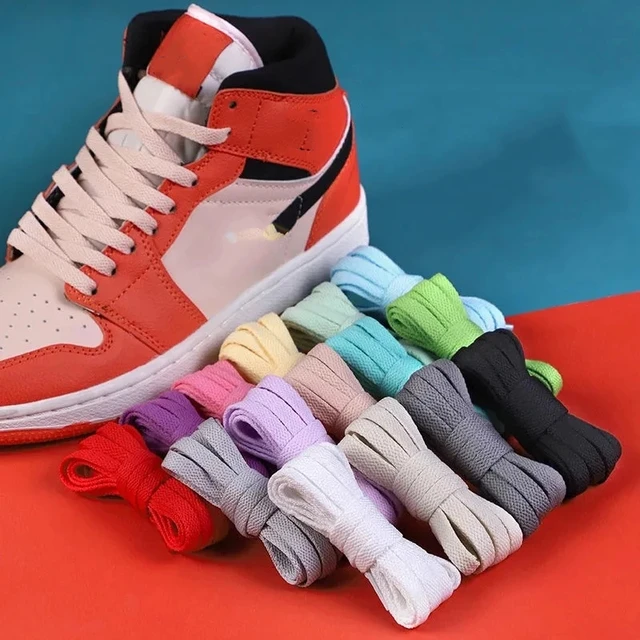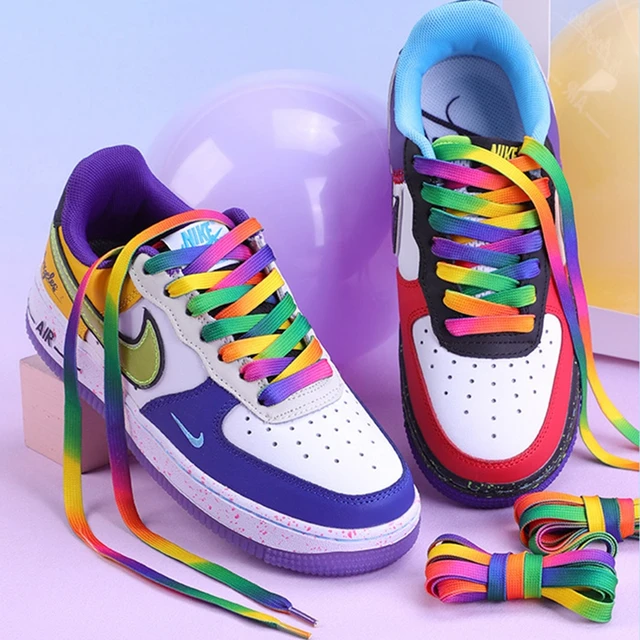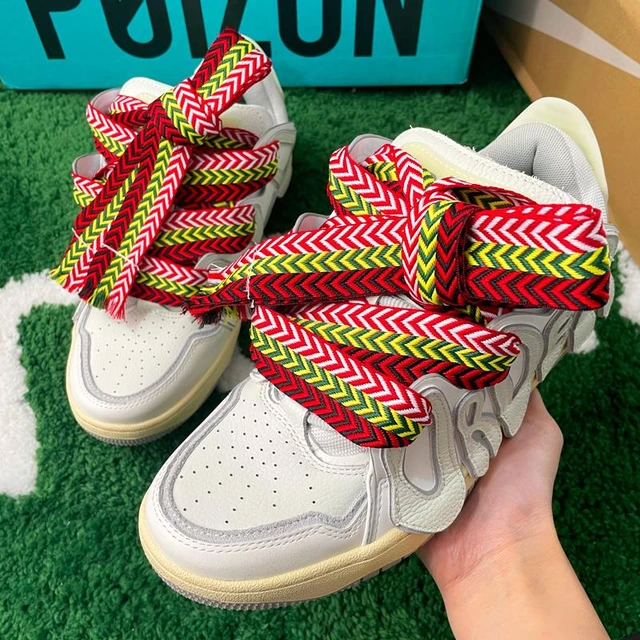Introduction
Shoelaces are a fundamental component of footwear, serving not just a functional purpose by securing shoes but also contributing to aesthetic appeal and style. At first glance, it may seem trivial to ponder what shoelaces are made of, but a deeper understanding reveals a fascinating array of materials, processes, and innovations that go into these unassuming accessories. This article will delve into the various materials used to manufacture shoelaces, the characteristics that make them suitable for different types of footwear, and the future of shoelace manufacturing.
The Essential Composition of Shoelaces
Natural Fibers
Natural fibers have been used in shoelace manufacturing for centuries. These materials are derived from plants or animals, offering unique properties that can enhance the overall design of the shoe.
Cotton
One of the most common materials used for shoelaces is cotton. Cotton laces are soft, durable, and usually relatively inexpensive. They can be dyed in various colors, making them versatile for different shoe styles. Their breathability and comfort make them ideal for casual footwear and athletic shoes. However, they are prone to fraying and may not hold up as well in wet conditions.
Jute
Jute is another natural fiber often used for shoelaces, especially in eco-friendly footwear. It has a rustic texture and a biodegradable quality that appeals to environmentally conscious consumers. While jute laces can be aesthetically pleasing, they may lack the durability and flexibility of cotton or synthetic alternatives.
Synthetic Fibers
With advancements in technology, synthetic fibers have gained popularity due to their durability, versatility, and innovative designs.
Polyester
Polyester is a synthetic material that is durable, moisture-resistant, and versatile. Shoelaces made from polyester are less likely to fray and can withstand harsh weather conditions, making them suitable for both casual and high-performance athletic footwear. Additionally, polyester laces are available in a variety of colors and patterns, allowing for personalization.
Nylon
Nylon shoelaces are another popular choice, particularly for sports and high-performance footwear. Known for their strength and elasticity, nylon laces can withstand significant tension without breaking. They are also resistant to wear and tear, making them a great option for individuals involved in strenuous activities.
Blends
Many manufacturers are now experimenting with blends of natural and synthetic fibers to create shoelaces that offer the best of both worlds. For instance, a blend of cotton and polyester combines the comfort of natural fibers with the durability and moisture resistance of synthetic materials.
Types of Shoelaces Based on Material
Different types of shoelaces are tailored to various footwear styles and activities, each serving distinct purposes.
Flat Shoelaces
Flat shoelaces are usually made from synthetic materials like polyester or nylon, but they can also be found in cotton versions. These laces are commonly used in athletic shoes and provide a secure fit. The flat design allows for more surface area contact with the shoe’s eyelets, which can improve stability during movement.
Round Shoelaces
Round shoelaces are typically made from cotton or synthetic materials. They have a classic look and are often used in casual shoes and boots. The round shape can make them easier to tighten and untie, though they may slip more than flat laces.
Elastic Shoelaces
Elastic shoelaces have gained popularity, particularly among athletes and parents of young children. Made from materials such as polyester or elastic blends, these laces allow for a tight fit without constant adjustment. They are ideal for sports and activities that require quick and easy shoe changes.
Specialty Shoelaces
In addition to standard options, there are specialty shoelaces made from unique materials. For example, reflective shoelaces are designed for nighttime visibility and are often made from materials that enhance light reflection. Similarly, waterproof shoelaces can be specifically treated to resist moisture.
Manufacturing Processes
Spinning and Weaving
The initial stage in producing shoelaces involves spinning and weaving fibers into the desired shape. For natural fibers like cotton, cotton bales are processed into yarn through spinning. Synthetic fibers, such as nylon and polyester, go through similar processes where raw material is extruded and then spun into yarn.
Dyeing
Once the yarn has been produced, it is often dyed to achieve the desired color. This step can be crucial for custom shoelaces, as brands often have specific color requirements for branding. Manufacturers may use various dyeing techniques, including dye sublimation, to ensure vibrant and lasting colors.
Coating and Finishing
Many modern shoelaces undergo a finishing process that can include adding coatings to enhance durability, stain resistance, or water repellency. This is especially true for synthetic laces, which often undergo treatments that reinforce their properties.
Environmental Considerations
Sustainability of Natural Fibers
While natural fibers like cotton and jute are biodegradable, the environmental impact of their production can still be significant. Large-scale cotton farming often requires substantial water resources and may involve the use of pesticides. However, organic cotton is becoming more popular as it reduces chemical use and promotes sustainability.
Eco-Friendly Innovations
The industry is evolving to include more eco-friendly options, such as laces made from recycled materials, organic fibers, or biodegradable polymers. Brands are now committing to reducing their carbon footprint and offering more sustainable alternatives, responding to the increasing consumer demand for environmentally conscious products.
The Role of Synthetic Materials
Though synthetic materials like nylon and polyester offer durability and strength, the environmental impact of their production and disposal is under scrutiny. These materials are derived from petroleum, and their production generates greenhouse gases. As such, manufacturers are exploring methods to recycle these materials or produce them with less environmental impact.
The Market for Shoelaces
Retail Environment
The retail landscape for shoelaces has adapted to consumer demands, with both online and brick-and-mortar stores offering a wide variety of options. Specialty shops may provide custom lacing solutions, while major brands often include unique laces as part of their footwear lines.
Consumer Trends
Recent consumer trends show an increasing interest in customizability and personalization. Brands are catering to this demand through a variety of designs, lengths, and colors. Eco-conscious consumers are also driving the market towards sustainable materials and ethical manufacturing practices.
Brands and Innovations
Notable brands are paving the way in shoelace innovations. Companies like Lock Laces and Zero Tie have introduced elastic laces that offer functionality and ease for various activities. Innovations in materials, including antimicrobial treatments and moisture-wicking technologies, are also emerging as brands differentiate their products.
 Future of Shoelaces
Future of Shoelaces
The future of shoelaces is likely to be shaped by ongoing advancements in materials science and growing consumer awareness regarding sustainability. As shoelaces evolve, we may see more emphasis on the integration of technology, making shoes not only more comfortable and functional but also eco-friendly.
Smart Shoelaces
With the rise of wearable technology, the concept of “smart shoelaces” could become a reality. These laces could feature sensors that track physical activity or measure foot pressure for athletes. Integrating smart features into shoelaces might revolutionize how we think about footwear design.
Enhanced Customization Options
As advanced manufacturing techniques develop, customization options for shoelaces will likely broaden. Consumers may have the option to design their own laces, choosing colors, textures, and materials to match their personal style and needs.
Emphasis on Performance
As athletic and lifestyle footwear continue to evolve, the shoelaces will need to match these advancements. Laces that enhance athletic performance by offering greater support, moisture management, and overall durability will likely become more common.
Conclusion
In summary, shoelaces are more than just simple accessories; they are composed of various materials that range from natural fibers like cotton and jute to advanced synthetic options like polyester and nylon. Understanding what shoelaces are made of leads us to appreciate the intricate manufacturing processes, environmental implications, and market dynamics influencing their design and production. The future of shoelaces holds exciting possibilities, from eco-friendly innovations to smart features that could redefine their functionality. Classic or contemporary, durable or stylish, shoelaces will continue to be essential components of our footwear, woven into the fabric of our daily lives.

